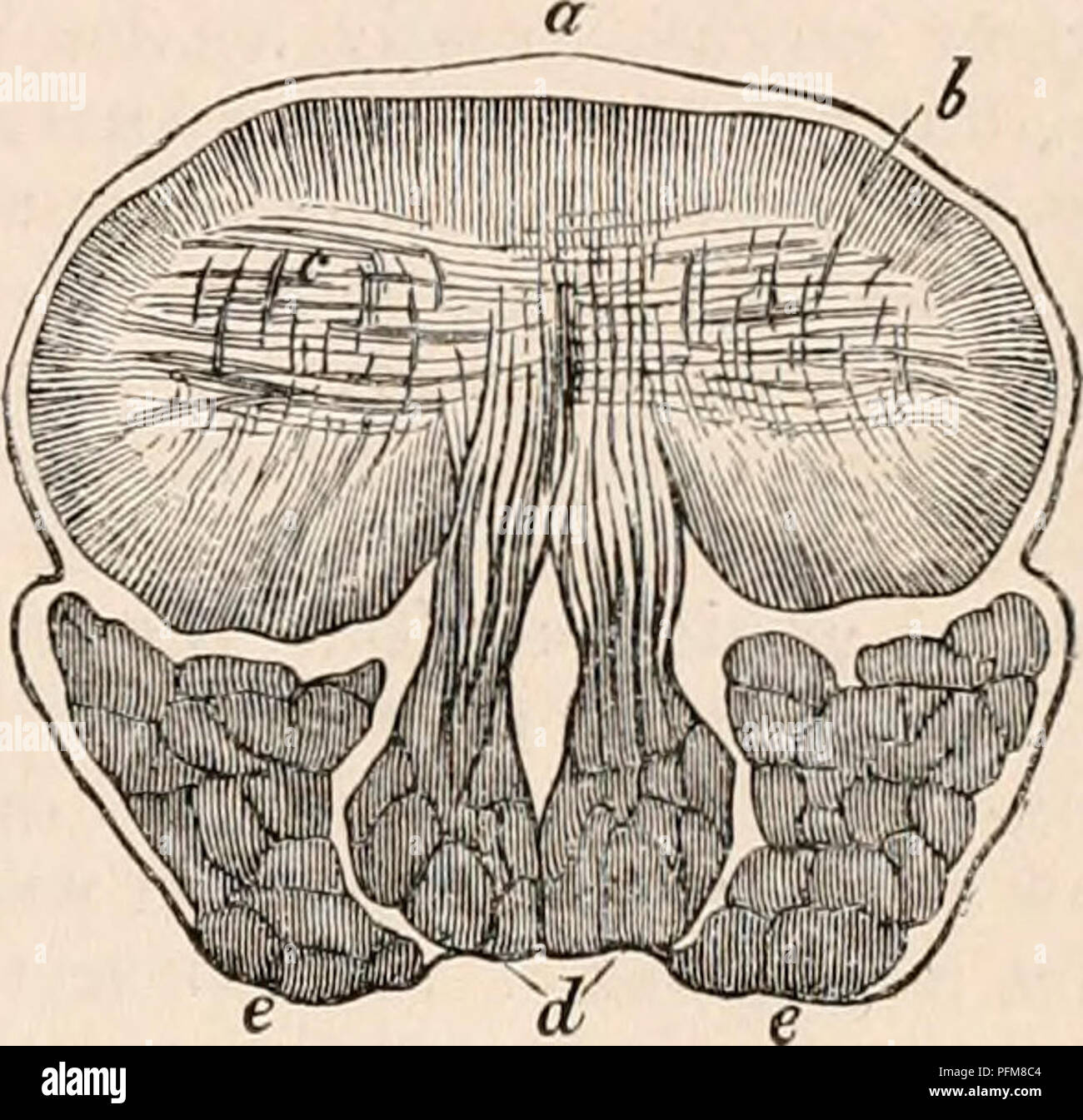. The cyclopædia of anatomy and physiology. Anatomy; Physiology; Zoology. TONGUE. 1125 cutis underlaying them, may be looked upon, in one light, as a part of the framework of the organ. They form a dense and unyielding envelope, tending to preserve its shape and give it firmness and support, and at the same time affording attachment to a great number of its muscular fibres. Such, then, is a concise description of the framework of the tongue. The first and last- mentioned elements of it are, doubtless, the most important; but it will be seen, at a future page, that the intrinsic arrangement of

Image details
Contributor:
Central Historic Books / Alamy Stock PhotoImage ID:
PFM8C4File size:
7.1 MB (393.9 KB Compressed download)Releases:
Model - no | Property - noDo I need a release?Dimensions:
1608 x 1553 px | 27.2 x 26.3 cm | 10.7 x 10.4 inches | 150dpiMore information:
This image is a public domain image, which means either that copyright has expired in the image or the copyright holder has waived their copyright. Alamy charges you a fee for access to the high resolution copy of the image.
This image could have imperfections as it’s either historical or reportage.
. The cyclopædia of anatomy and physiology. Anatomy; Physiology; Zoology. TONGUE. 1125 cutis underlaying them, may be looked upon, in one light, as a part of the framework of the organ. They form a dense and unyielding envelope, tending to preserve its shape and give it firmness and support, and at the same time affording attachment to a great number of its muscular fibres. Such, then, is a concise description of the framework of the tongue. The first and last- mentioned elements of it are, doubtless, the most important; but it will be seen, at a future page, that the intrinsic arrangement of the tongue's muscular fibres is such that they mutually support each other, and tend to keep the organ firm and compact, which obviates the necessity of any considerable structures especially destined for that purpose. 2. The muscular system. — Constituting the chief bulk of the tongue, imparting the required consistence to it, performing the ma- jority of its functions — prehension, mastica- tion, deglutition, speech, — and necessary even to the perfection of taste, the muscular sys- tem of the tongue may be considered the most important of all. The muscles of the tongue are of three sorts, and admit of the following arrange- ment : a. Intrinsic. b. Extrinsic. c. Accessory. The intrinsic muscles are those which form the substance of the organ, that pass from part to part of it, and that move the tongue on itself. The extrinsic (proper) are those that, as well as entering in some degree into the sub- stance of the tongue, pass from it to neigh- bouring fixed points, to which they attach it, and on which they move it. The accessory are those which, though not contributing in any degree to the formation of the tongue, nor attached to it, are yet engaged in all its extrinsic movements, acting as coadjutors to those proper extrinsic mus- cles whose direction coincides with theirs. Of the two first I shall speak particularly: little more than their enumeration will suffice for